Schrödinger’s App: On Key Collector Comics and its Place in the World of Comic Book Speculation
There are few things I enjoy more than looking through long or short boxes I find in antique stores, thrift shops, flea markets or wherever else, hopeful something special will reveal itself. I’ll be honest: it’s rare something does. They are typically loaded with variations on the same formula – the usual mix of The ‘Nam, inessential ’80s issues of Batman and Detective Comics, and I’m pretty sure every copy of New Universe related titles in existence – but my quest has always been in pursuit of one comic: The Incredible Hulk #181. You know…the first appearance of Wolverine? 1 Over my lifetime, I’ve looked through hundreds – probably thousands! – of long boxes, hopeful of uncovering my comic book holy grail.
Yet I’ve always come up empty. I’ve found plenty of other worthwhile comics, with my rather shoddy but beloved copy of The Avengers #1 that I discovered at an antique store near Seattle for $10 leading the way. But The Incredible Hulk #181 has escaped my grasp. #183? Many times. #179? Ugh, cruelly, yes. I’ve even found plenty of issues from that period with a similar red color at the top with The Incredible Hulk written in the same white as #181 has, but those were just heart-stopping misdirections.
Even though I don’t really buy back issues anymore – except when I find something that’s impossible to ignore – I still look through long boxes, eternally hopeful for that shocking, unforgettable find. That’s a feeling many comic fans chase. It’s a hard one to shake. There’s a certain segment who have something wired in their brain that makes slogging through every 90s comic ever in hopes of finding that one comic a worthwhile usage of their time.
I know that for a number of reasons, but I saw it first hand when I hosted my first comic book garage sale in 2018. In just the first day, nearly 60 people came through and went through a lifetime of my comic book collecting, looking for their own version of The Incredible Hulk #181. Many found plenty to buy, as multiple customers left with an entire long box in their hands. It was a heck of an experience, and one that often made me wonder whether I was making a mistake selling some of my comics.
That weekend was when I first discovered Key Collector Comics, an app loaded with searchable information about basically every “key” comic – which, for those that don’t know, are essential or notable comics with first appearances or momentous occasions being qualifiers – and prices for varying qualities of condition on each. This app was a lifesaver, as it helped limit those aforementioned mistakes, namely, selling a valuable comic for 50 cents or less. 2
It, in some ways, is like Wizard Magazine’s price guide, except instead of being bogged down with the minutiae of comic book history, 3 it focuses on keys to keep things straightforward. That simplicity made it irresistible for me as a comic fan. It was a uniquely powerful tool, and one that scratched an itch in me that hadn’t been reached in quite some time.
Since that weekend, the comic industry has seen some surprising shifts, as there has been a frankly shocking resurgence of speculation, 4 and it’s hard not to connect an app like Key Collector Comics to that phenomena. As someone who both enjoys the app and is curious about comic industry trends, I wanted to get a better understanding of what exactly Key Collector Comics was all about, and how the app’s creator Nick Coglianese views its position in the current marketplace. So today, we’re going to be doing just that, as we dig into its origins, where it fits in comics today, and more, while examining the tension the industry has at the intersection of reader, collector and speculator.
Coglianese’s comic book life began in a typical place: Tim Burton’s 1989 Batman film. Batman was his “gateway drug into comics,” as that film’s trailer led to his reading of the movie’s novelization, which guided him to Frank Miller’s The Dark Knight Returns. In a shorter distance than from here to Kevin Bacon, Coglianese was a comic fan, and one who was hooked for life on these modern day myths.
There were two moments for Coglianese that put him on a path to creating the Key Collector Comics app. The first was a decision to change how he engaged with comics. Like many comic fans, at a certain point you have a realization that, “Wow, these really take up a lot of space.” Coglianese decided in his 20s to switch from buying single issue comics to graphic novels – “which didn’t do much to preserve space,” he admitted – before making his primary focus the key comics his business eventually rested upon.
The second was an extension of that shift. Once upon a time, he was managing the sales distribution network for a liquor company, which, naturally, came with a lot of driving time. As a comic fan with a healthy interest in the history of comics and the issues that played a part in it, Coglianese did something many collectors do: he charted comic shops and antique malls in his path, with the hopes of finding something special within them. At that point, he was only armed with a list he had created in the Notes app on his iPhone, an ineffective method that ensured the bulk of his time was spent googling issue numbers to determine if what he found was notable.
This experience gave him great joy – besides when someone looking through comics near him found something before he did, because, as he noted, “collecting is very competitive” – and it wasn’t something he did to make money from. Coglianese claims to have only sold one comic ever, and it was one he deeply regretted selling, even declining to name it because of his despair over it. Instead, the value of a comic stemmed from the pride and memory that came with finding them, as he told me, “my memory is bad but I could probably tell you where I got each one of my key issues.”
“They all have stories printed on their pages but they also have a story that is personal to me,” he added.
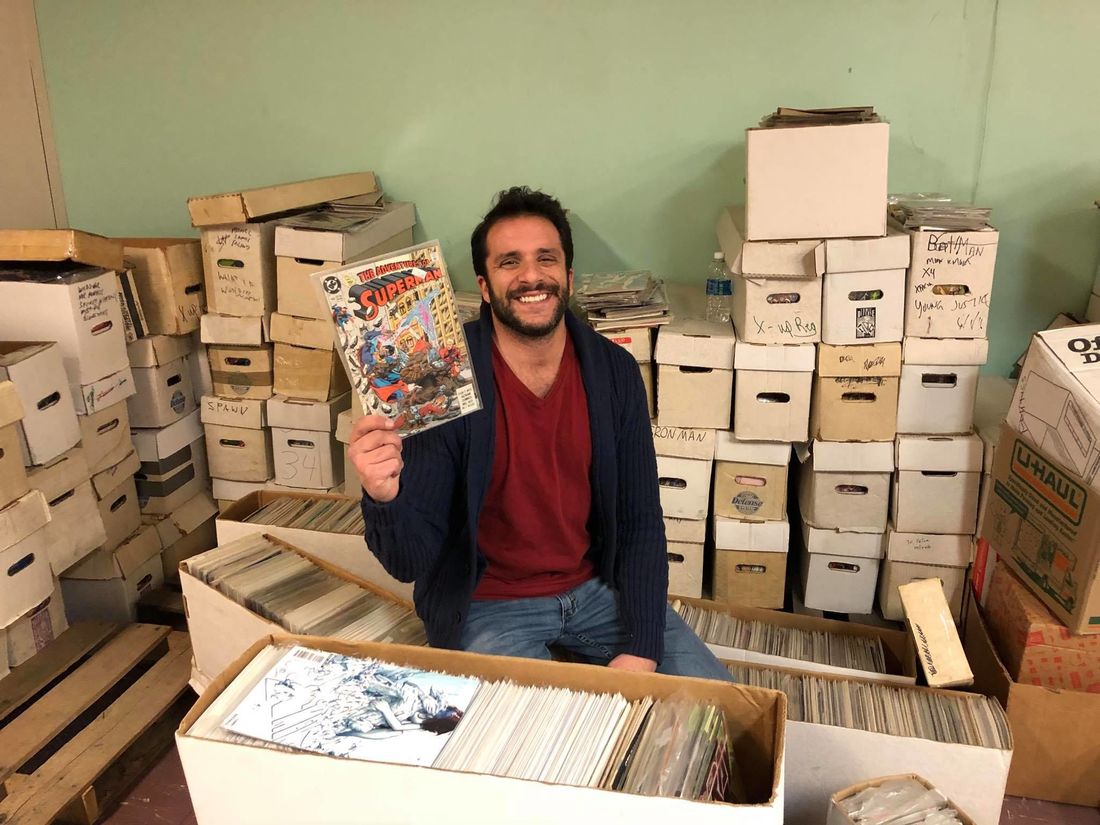
Those experiences led him to the app idea, as he stumbled upon what he called his “Shangri-La collection.” It’s an idea that many collectors share a desire for, including yours truly. You look and look and look, until one day there it is: a collection loaded with treasures you could hardly imagine. He was living in Milwaukee at the time, and when he visited Downtown Books – Bought & Sold there; he came across a slew of shockingly priced comics of note. 5 When he quizzed the store’s owner about what other comics he may have, Coglianese discovered that this wasn’t the proprietor’s entire collection. He had 500 long boxes in a warehouse. After regular inquisitions, he was given access to it. Four months of digging into this absurdly large collection later, Coglianese left with a mountain of treasure and the foundation of the Key Collector Comics app idea.
So what is the Key Collector Comics app? You might call it a price guide. Some describe it as a speculator tool. Others may just call it overwhelming. But Coglianese says it is a “a guide through the history of comics via the key issues that introduced and defined the characters and the universes in which they exist.”
“It’s meant to be a resource to allow an easier entry into the enjoyment of comics,” he said. “Just imagine the experience of someone walking into a convention or even a comic store. Rows and rows of boxes. Walls with hundreds of books. If you know there’s a character you like and want to know what were the significant moments in their development, you can just open Key Collector Comics and start there.”
As someone who has heard the refrain “How do you know where to start?” far too many times to recall, that’s a compelling explanation. It’s an idea of obvious value, and one that would be meaningful to specific types of comic fans.
The premise of the app is simple, though. It’s a massive, searchable database in which you can browse titles and characters to find the essential issues from their lengthy histories, as well as a general idea of how much they are worth. 6 Looking for Stilt-Man’s first appearance? A quick search on the app tells me it’s in Daredevil #8. Unsure if this random issue of Cable you have is worth something? The app can tell you! 7
There are over 100 other sections, including:
- “Hot Keys,” which tracks, well, key comics that are hot.
- “The Spec Deck,” or, a section that’s intended for “entertainment purposes only” that connects users with comics that could potentially be valuable at some point, with “Spec” meaning speculation.
- “Nick’s Picks Vol. 1,” which is a list of 25 comics Coglianese curated that, as he noted, may be valuable but are more meant to be interesting issues. 8
There’s a whole lot more in there, but this is the staggering part about it: it’s all hand-entered. Coglianese does the data entry himself. This means quick turnaround times, but also a lot of effort on his end to research everything. He shared that he once spent over an hour determining what exactly was the first appearance of Doctor Strange villain Shuma-Gorath. 9 That puts a lot of pressure on him to stay on top of things.
“When something interesting is announced like a comic getting optioned or a new casting, seconds later I’m sending out a push notification to my subscribers,” he told me. “I spend most of my time monitoring what’s going on in the comic world.”
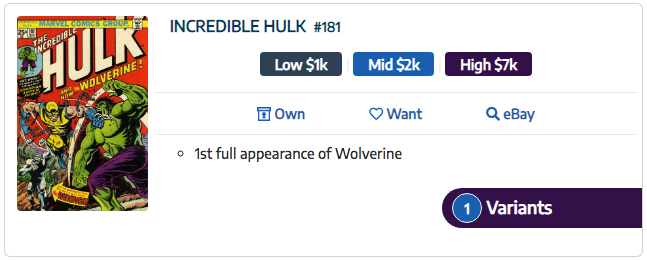
One thing I was interested in was how he determines what does or doesn’t make it into the app if it’s all self-determined. He had rules that guided him in that exercise.
“The criteria for a comic to be entered into the database usually starts with value,” Coglianese told me. “If we’re looking at anything from the Copper Age to the present, it has a minimum of $8 resale on eBay. Then I’ll look at character significance. If a character has appeared more than 15 times or they’re responsible for a major event then they’ll go in as well. I’ll add variants that resell for at least $25 but they are separate from the main database to reduce the clutter.
“All in all there are 14,357 issues in the database. By the end of the day there will probably be close to 14,400.” 10
In regards to the alerts he referenced earlier, those have their own set of rules. As he notes, “the success of the app is contingent on the trust that the collector has in the resource.” So he ensures that anything he passes along as a “Key Issue Alert,” as he calls it, “are straightforward facts that will have an effect on the comic market, usually by increasing the value of an issue.” These only go out to subscribers, which is a value add for those that do have a paid membership.
Speaking of, let’s talk about those memberships. As Coglianese told me, the entire database – the primary focus of the app – is free, but those aforementioned sections like “Hot Keys” and “The Spec Deck” as well as the alerts of new keys come with the paid subscription that costs $1.99 a month or $19.99 a year. Coglianese does that both as a way to fund the app but also because these categories are the ones “that have a monetary benefit” for users. Those and affiliate links to eBay on each listed comic – which generates a commission for him but doesn’t increase the cost for the buyer – are what fund the platform.
The reason I wanted to write about the Key Collector Comics app, if I’m being honest, wasn’t because of its usefulness or due to my personal enjoyment of it. It’s because of its inseparability from the speculator boom we’re seeing today in comics. Speculator sites, message boards and apps like Key Collector Comics are essential parts of this trend. They act as the mechanic that almost dictates what is or isn’t hot, leveraging information about comics to determine the keys of today.
While much of it is derived from fact – particularly movie or other adaptation news – others become a chicken and the egg situation, much like the ones Wizard Magazine once fueled. Some suspected that magazine was used to drive sales and prices of specific titles artificially. That’s of course a concern with something like the Key Collector Comics app as well, as it can say, “Hey, Captain Marvel #8 is a big deal because it contains the first appearance of Star!” or “Reaver #1 is the Key of the Week!” and all of a sudden shops around the world are sold out thanks to a quick push notification. That’s murky territory, and if used inappropriately could be a real problem. It’s a short step to the comic book equivalent of insider trading.
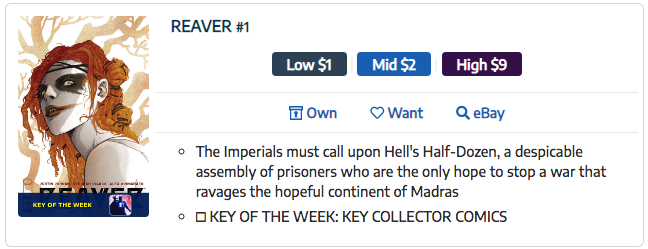
Does that make apps like Key Collector Comics a bad thing? That largely depends on who you ask. I talked to retailers about the app and most of them had complicated relationships with it, with one straight up saying they weren’t sure it was good for comics. They love it as a resource, as it genuinely does help people in that regard. The fueling of “key” comics of uncertain merit and the price guide set up were problems, though, as one told me “eBay isn’t reality.” It’s easy to see why, as the discount comic sales of today are littered with the “keys” from yesterday. Short-term speculation rarely leads to long-term gains, no matter who you’re talking about.
Of course, it’s also worth noting that some retailers aren’t just fine with it, they actively work with Coglianese. Jesse James Comics in Arizona, for one, had a direct partnership with Key Collector Comics, developing a “Key Collector Comics Box Set” that acted as a blind box equivalent for comic collectors. Some see the value in these apps and sites.
A lot of the complication comes from the tension created by the mix of buyers in the market today. There are three main types in my mind. There are readers, who primarily buy comics to, you know, read them. There are collectors, who are there for treasures that make them feel pride and joy in what they’ve acquired. And then there are speculators, who are there either for a short-term flip or getting ahold of the next giant before it’s valuable. 11
The former largely looks at these tools as a big whatever, even if its guide does aid them as well. For a collector, Key Collector Comics is of immense interest. I have literally spent hours just looking through the character and title search just because I find the history of comics to be fascinating. It’s a time suck, and something that has helped me in a way that Wikipedia often does when there’s a hole in my comic book knowledge. And for speculators, there’s obvious value. This is like card counting for them, giving them an edge on others in their area in terms of acquiring the next “big” book.
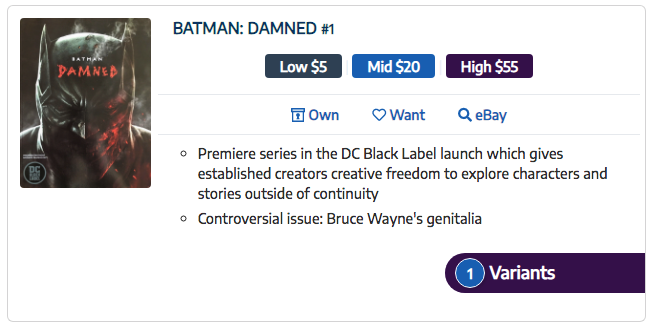
Of course, shops have already started to resist the efforts of the latter type. Retailers keep an eye on these apps to see what’s hot and limit the amount a customer can buy. You might wonder why they’d do that. A sale is a sale, right? Well, if you sell all of your inventory of Batman Damned #1 to speculators looking to flip all of them on eBay, and you order issue #2 based off the idea it sold out in your store, then who is going to buy issue #2? It’s certainly not going to be the people who were intending to buy a comic to read it, as they were unable to purchase a copy originally. 12 It’s an unsustainable practice, and one that puts readers and speculators into almost direct conflict, as success for the latter leads to failure for the former.
Like I said, it’s complicated.
What does Coglianese think of all of this? It’s nothing he hasn’t heard before, that’s for sure.
“Many have said this is a speculator app, which is understandable because at this point in time, it’s a hot button that gets a lot of attention,” Coglianese told me. “Yet, the average amount of time spent on the app per person is over eight minutes, which I guess I probably shouldn’t say but its not like I’m going to get fired.
“Theoretically, as a speculator, you can go onto the app, look at the speculation section, find what’s new, maybe one or two books and move on with your day. Thirty seconds. But there is so much interesting information and (so many) different categories, (with) new content added throughout the day that it’s just fun to browse.”
As noted above, that’s an experience I can attest to. It’s enjoyable to browse. For a comic fan and sometimes collector, it offers a connection to the history of the medium and its characters that’s difficult to find. Before this, it was largely impossible to locate in one place. And god only knows there is a lot of information on it. Coglianese estimates that the speculation aspect of the app only represents roughly one percent of its content, yet the “speculator app” label is one he cannot escape, despite the fact there was no element of speculator engagement, content-wise, until 15 months into its existence. 13
Coglianese did emphasize something I hadn’t thought of in regards to the comic book marketplace. While the speculation aspect has seen a boom, the collector side of the business might equal that rise. He describes that realm as “more important than ever before,” and that’s largely because of the influence of the adaptations in movies and television.
“American comics are now woven into the pop culture fabric of many cultures and preserving the genesis of their creation is important,” Coglianese told me. It’s something I’ve seen emphasized in person recently.
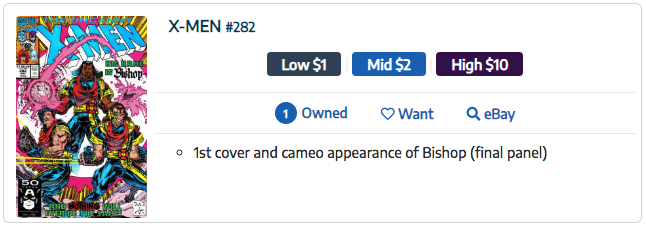
At this year’s edition of my garage sale, one of the visitors to my shop was the owner of a local screen-printing and design company. He doesn’t buy new comics anymore, but he was a massive fan as a kid who now loves the movies. As an adult with actual money these days, he was looking to acquire or reacquire notable books from throughout comic book history. He bought the first cameo appearance of Bishop from Uncanny X-Men off me as well as New Mutants #1, and he was in hot pursuit of a slew of key issues from the history of the X-Men and Spider-Man. He wasn’t there to find comics to resell. He just wanted something special to call his own, tapping into the warm emotions these characters made him feel.
Those collectors are real, and they’re just as much a part of the market as anyone else is. But the speculator impact is significant, and its influence is as well. I’ve seen it first hand, with Friendly Neighborhood Spider-Man #6 selling out in my shop before I could buy it thanks to that side of the industry. What drove speculator interest? It was the first appearance of Spider-Bite, a character that these buyers hypothesized would be a new sidekick for Spider-Man. In reality, that wasn’t the story at all. This just resulted in a lot of speculators being stuck with a very good but ultimately not that valuable comic. I asked Coglianese about that title in specific.
“That’s an interesting example and the same thing is happening right now with Marvel Comics Presents #6 14 where prices are getting to a point of being ridiculous yet no one knows how significant the character will be,” he told me. “Speculation is a double-edged sword because it’s easy to get discouraged if one is only in it for the financial benefit, overextends themselves or has unrealistic expectations.”
He did note one other thing about specific titles seeing an influx of attention because of speculation, and that’s while some books can have this kind of artificial, unsustainable interest because of it – like that issue of Friendly Neighborhood Spider-Man – others could see secondary market interest drive honest-to-goodness growth. The example he used was one of the most notable successes of the past year: Immortal Hulk. In his mind, it wasn’t the creators or character that generated the buzz that led this title to its position as a top 10 seller. It was the secondary market.
“The book really didn’t start to see serious interest until maybe six issues in and a lot of that had to do with Immortal Hulk #2, which eclipsed $100 on the secondary market weeks after its release,” Coglianese told me. “Immortal Hulk #1 had around 85k copies purchased by retailers which dropped down to about 45k copies purchased with issue #2 and went on like that until #16 where the number of copies ordered exceeded the first issue.
“I think a lot of that had to do with speculation. It got people to start reading the book to figure out what was possibly coming up so they could speculate on back issues that might heat up due to a character reintroduction. Also, for those going to the comic shop every week and seeing it was sold out, (it) sparked a fear-of-missing-out feeling.”
Pair that with the title’s immense quality and you have the makings of a giant hit. And while Coglianese’s all conjecture there, it tracks with reality. I asked my friends over at ComicHub – a suite of retailer tools that also tracks sell-through at participating stores – and the actual sales to customers match the playbook he lays out there, with the title now trying to find its true level after orders from shops increased dramatically. Normal attrition is beginning to take hold 20+ issues in. That doesn’t mean that speculation was the sole reason for Immortal Hulk’s success. But it certainly played a part in the lift it saw, both in consumer interest and its visibility. 15
That ties into a theory Coglianese himself had about the rise of speculators in modern comics, and that’s how ordering practices is leading to opportunities for the secondary market. It may not be a coincidence that the rise in the speculator market has coincided with retailers battening down the hatches 16 because of the turmoil within the industry. While the other notable speculator boom in the 90s came alongside huge order numbers, peaking with X-Men #1’s 8.1 million print run, these days, there are far less copies being printed. That leads to an inherent lack of supply. I once had a retailer suggest to me that a single consumer could corner the market on a comic in a single city in a day, and that’s a real thing. Plus, unlike the 90s, there are ample opportunities to connect buyers and sellers thanks to the growth of the Internet. Combine that together and you have the perfect recipe for this boom.

Recently, I had someone on Twitter ask me if it’d be possible to Moneyball comics – meaning, do what baseball teams have done and find market inefficiencies to drive success at what you do – and this whole idea is an example as to why that’s so difficult. Everyone in comics has a different vision of success. That makes it hard to find an answer that works for everyone. Publishers want to sell comics to retailers but some may not care if they result in sales to their customers. Retailers want to sell to customers who don’t just buy this issue, but the next issue and the one after that. Readers, collectors and speculators operate with different objectives in mind. The direct market is set up less like a collaborative industry than a combative one, even though that isn’t the route that would likely result in the biggest gains for any player. 17
But if anyone has found a way to game the system, it is the speculator side of the industry. The low order numbers of today allow for a certain level of market control that’s hard to imagine in other industries, with there being a real cause and effect connected to the things sites and apps like Key Collector Comics do or say. It makes you wonder whether a book is hot because they are actually hot or because these apps said so. That issue of Friendly Neighborhood Spider-Man is a perfect example. It was deemed a target due to its diminishing orders and the first appearance of an apparent major character, who with a reading of the issue was revealed to not be “important” in the way they were hoping. 18 It’s real interest generated from theoretical value, and whether the latter pans out is often uncertain. But artificial value benefits no one, which is the concern with the speculator landscape.
Key Collector Comics is part of the game, whether Coglianese intends to be or not. A retailer compared the app to Viagara, which may seem like a reach, but hear me out. Viagara was originally designed as heart medication until they realized that there was far greater value to it as what we’ve come to know it for. Is that the same story for this app? Did it find its true calling in something it wasn’t intended for? Again, the answers likely depend on who was asked.
Key Collector Comics is for readers wanting to learn more about their favorite characters.
Key Collector Comics is for collectors looking to find a treasure they didn’t know they always wanted.
Key Collector Comics is a speculator app, fueling a secondary market in comics that’s both a good and bad thing at the same time.
Which is it? If I had a vote, it’d be all three at once, and again, it depends on who you ask because it’s all about who is using it. The value of the app completely relies on your objective with it. Thus is the nature of almost anything in the world that contains some level of power. The app’s potency is directed by its user, making it not entirely dissimilar from the characters whose histories it touts. With great power comes great responsibility and all of that. Unfortunately, not everyone is responsible.
But is that the nature of Key Collector Comics? I don’t think so. If challenged to decide whether it’s a net positive or a net negative, I’d go with the former, as one way or another, it gets people excited about comics and the emotions that are tied to those special issues and characters.
And after talking with Coglianese a fair bit about what he does, why he does it and everything else from Key Collector Comics, I genuinely believe he isn’t some mustache-twirling villain fueling the speculator market. He’s a passionate fan and collector of comics, and he’s sharing that through his app. I asked him about his love of comics and long box diving, and honestly, I saw a lot of myself in what he had to say.
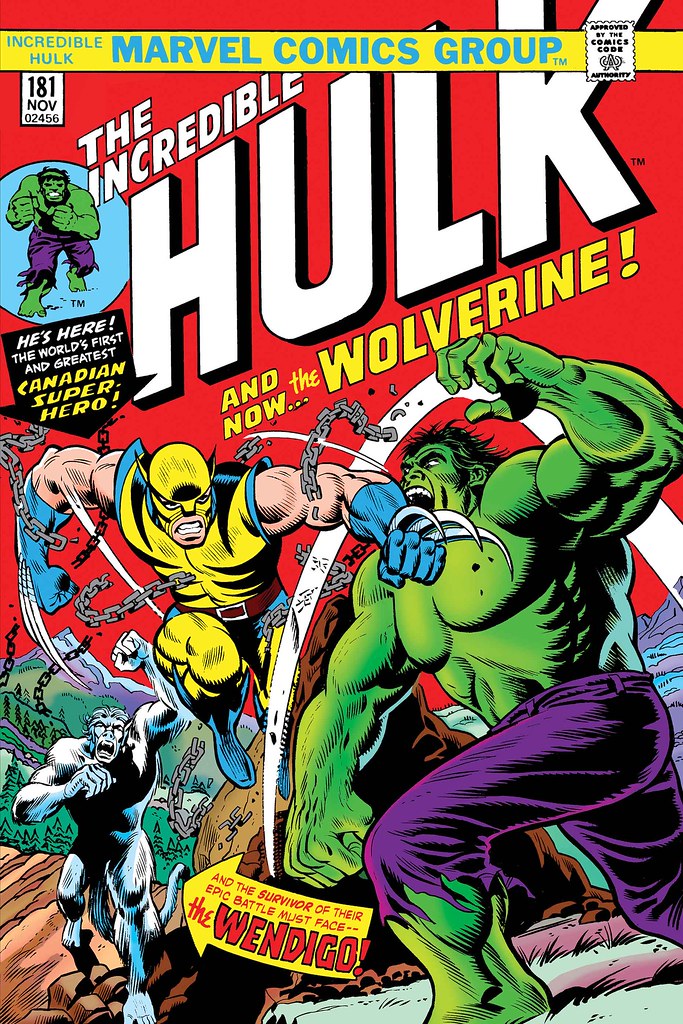
“I think what’s exciting about going through long boxes is the payoff and even the expectation of the payoff,” he told me, noting that payoff isn’t a financial element, but an emotional one. “It’s the payoff of running across something that is valuable and finding it for next to nothing. While flipping through a box, hundreds of comics monotonously, then your eyes fall on something you know you recognize but for a split second your brain hasn’t processed it or believed it yet.
“Your heart skips a little.”
That’s a spiel I could imagine saying to my wife after I spent hours in an antique store looking through long boxes, endlessly pursuant of The Incredible Hulk #181. The odd thing about the experience of a comic fan like Coglianese or myself is buying a comic like that one in a normal capacity – say, purchasing it off eBay – just wouldn’t be the same. It’s about the pursuit, and the emotions tied to finding something that means the world to you in a pile of comics that were otherwise forgotten.
It’s not a surprise that the industry has a complicated relationship with Key Collector Comics and services like it, though. Regardless of Coglianese’s intent, some use the app as a guide to swarm titles like No One Left to Fight or Reaver simply because it’s suggested each first issue could be a hot one, ensuring a precarious position in which the bulk of inventory goes to speculators and not readers. There can be good with that – it feels as if Immortal Hulk benefited from secondary market interest, lifting it to a rightful position – but bad as well.
As long as Coglianese handles it responsibly, though – and from my regular use of it, he seemingly does – it’s something of real value that successfully reflects what he was trying to accomplish with it, offering a helping hand to those looking to expand upon their passion for the medium and a tool to better understand the wide world of comics.
Although he did appear in The Incredible Hulk #180, that technically counted as a cameo, which I always found to be strange. He appeared first there, didn’t he?!↩
For example, did you know that Cassandra Cain’s first appearance was in Batman #567, and that I apparently bought three of them for some reason?↩
Wizard listed everything, even if some of it was listed as a chunk of issues of the same value.↩
As I covered in my recent retailer feature.↩
The one Coglianese specifically cited was Uncanny X-Men #221 – the first appearance of Mister Sinister – for just $1.↩
Each comic has a low, mid and high value listed, with those values depending on condition and built from eBay auctions.↩
Two notes: first off, it isn’t, and second off, the app doesn’t list every comic. If it’s absent, it means it isn’t valuable or notable.↩
It really is an interesting list, with the first comic listed being the home of the famed meme image of Batman slapping Robin.↩
It was in Marvel Premiere #10, if you were curious.↩
This was over a month ago at this point.↩
Some may say this is actually arbitrage, but tomayto, tomahto, I say.↩
There’s always a second print, but customers may have moved on by then.↩
That’s when “The Spec Deck” was introduced.↩
The first appearance of someone who may or may not be Wolverine’s daughter.↩
One shop also specifically noted the impact speculators had on the book in their store, as they saw a lift in trade sales that coincided with speculator interest.↩
Understandably.↩
Mathematician John Nash would rage if he had been given a chance to consider the comic marketplace.↩
Worth noting: even originally, Key Collector Comics derided the importance of this issue at the time.↩
